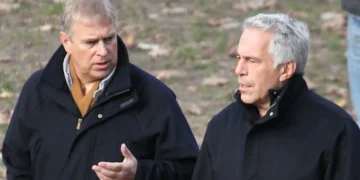. . . Now, twenty years into my teaching career, as a good many people start to think that the long game requires turning inward to thick communities and the existential ordering of souls, I find myself turning back to the image of St. Michael at battle. I haven’t changed my mind about how a classroom should work, and I still have great distaste for those who politicize teaching, but it does seem to me that reason should more directly take arms against the sea of our troubles than I had thought before.
Perhaps my irenicism was naïve or culpably ignorant, perhaps I should have recognized the signs of the times all along, but the danger to our form of life is more of an existential threat than it was before. What had been gathering clouds is now a full-on tempest threatening our little raft.
In A Secular Age, Charles Taylor defines “exclusive humanism” as the belief that there are no final goals beyond human flourishing and that such flourishing can be attained and satisfied without any reference to, belief in, or involvement with the transcendent. On this understanding, ordinary, immanent fulfillment is all there is, all we can hope for, and all we need or should want. Exclusive humanism might now be considered the default model of Western society. As Taylor describes it, this kind of secularity sets the conditions of belief in what he terms the “immanent frame.” Even religious adherents operate from within the framing picture of exclusive humanism and define and live their belief from the starting point of immanence.
This is a radical change. There have always been unbelievers, and at times even hostile and active proponents of unbelief, but our secular age is one in which “the eclipse of all goals beyond human flourishing becomes conceivable,” as Taylor puts it. But not just conceivable, as if it is now possible to think this way; rather, unbelief has become the condition of the possibility of conceiving. That is, unbelievers no longer position themselves against the background of widespread belief; rather, it is believers who must position themselves against a default model of exclusive humanism and who must believe despite the patterns of what is held to be conceivable. To believe is now to dissent.
On its own, exclusive humanism is not an existential threat to the tradition, even if it goes some way to explain the pervasive loss of faith. Unique to our time, though, is that the default model of unbelief is coupled with an aggressive, even tyrannical, impetus to what Phillip Rieff terms “anti-culture.” Proponents of the older traditions not only engage the battle from a defensive position, but their opponents hold sway in most, if not all, of the culturally formative institutions, and are engaged offensively. Not content to hold predominance, they need to uproot and eradicate the tradition.
As Rieff explains, anti-culture, just like a creating culture, is unending and all-encompassing, defining and ordering every domain of human reality. The agents of anti-culture are committed to an inverted catholicity, pronouncing universal judgments on meaning, freedom, and the human good, judgments that claim to be authoritative standards of legitimacy. To dissent is to place oneself outside of legitimacy, thus to be a heretic threatening the stability of anti-culture. So it is, in Rieff’s description, that the elites of our time “are characterized by their relentless promotion of the clean sweep.” Traditional culture must not simply be denied; it must be disallowed. . . .







